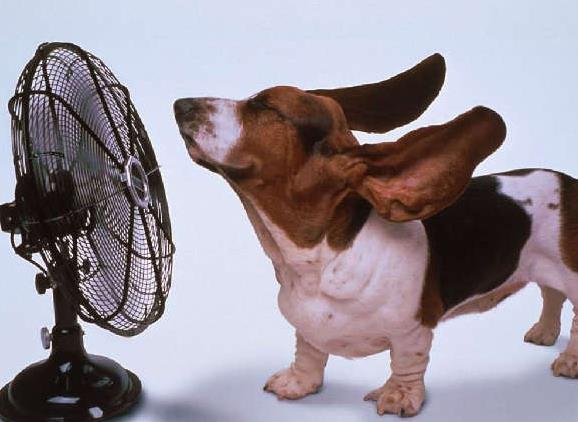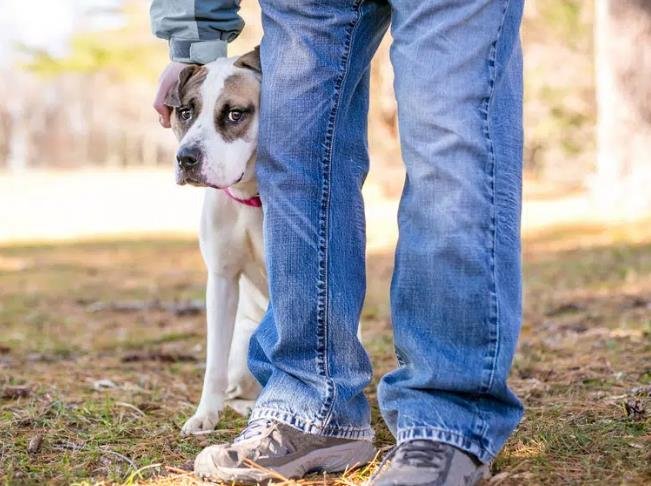The weather is too hot, so be careful when doing any exercise, including walking your dog. People are more prone to heatstroke, while dogs are more prone to heatstroke. Dogs are more prone to heatstroke than humans because they have almost no sweat glands on their bodies and can only rely on breathing to dissipate heat, which is not as effective as humans.

What is heatstroke?
When the temperature is too high, the body will react. In fact, heatstroke is the most severe stage of the body feeling overheated, before which the body will have various reactions.
Exercising in hot weather may first cause spasms, also known as cramps, which manifest as muscle spasms throughout the body, usually due to dehydration and electrolyte imbalances.
If you continue to exercise at this time, it may develop into heat exhaustion, manifested as fatigue, weakness, and even symptoms such as vomiting or diarrhea.
If heat exhaustion continues to develop, it can lead to heatstroke. Heat stroke is caused by dysfunction of the temperature regulation center or sweat gland function, as well as excessive loss of water and electrolytes, manifested as central nervous system and cardiovascular dysfunction. The main symptoms include fever, dizziness, epilepsy, and multiple organ dysfunction.
What we usually refer to as heatstroke generally only refers to heat spasms or heat exhaustion, while true heatstroke is very serious and even life-threatening.
Heat stroke develops rapidly, and if not handled properly, it may lead to death within an hour. Therefore, once there is suspicion of heatstroke, seeking medical attention immediately is very urgent.
Symptoms of heat stroke in dogs
Gasp for breath
Gingivals turn red and sticky
Tachycardia
dehydration
High fever
vomit
diarrhea
vertigo
shock
epilepsy
The causes of heat stroke in dogs
Dog heat stroke usually occurs in two typical scenarios.
The first scene is when the dog is trapped inside the car, and even during the season when the temperature is not very high, the stuffy temperature inside the car may rise by 22 ℃ per hour. Even if the outdoor temperature is only 20 ℃, leaving the dog in the car for an hour may cause the internal temperature to rise to over 40 ℃.
The second scenario is walking the dog in a humid and hot summer, especially when the sun is very strong. Even if the dog is walking for a short time, it may still cause heatstroke. It is recommended to walk the dog in the early morning or late at night during summer, and always bring enough water.
In addition, some dogs are naturally more prone to heatstroke, which is related to their physical conditions, including:
Flat faced dogs (such as French Bulldogs, etc.)
heart disease
Laryngeal paralysis
Obesity
Tracheal collapse
In addition, elderly dogs have a higher risk of heatstroke.
First aid, treatment, and rehabilitation
If you suspect your dog of heatstroke, seek medical attention immediately.
At the first time, it is important to cool down the dog as soon as possible. According to statistical data, implementing cooling procedures before reaching the hospital can increase the survival rate from 50% to 80%.
When cooling down, do not use ice cubes or ice water, as this may increase the risk of shock and even lead to hypothermia.
If conditions permit, transfer the dog to a cool and ventilated place and use a fan to blow air. On the way to the hospital, continuously moisten the dog’s body with room temperature water and place a damp towel on the dog’s body.
After being sent to the hospital, doctors may administer intravenous fluids based on symptoms to correct dehydration, use medication to alleviate or prevent vomiting and diarrhea, and use antibiotics to prevent infection. Depending on the severity of the condition, treatment such as oxygen therapy and blood transfusion may also be necessary.
Doctors may also conduct necessary examinations to assess the degree of liver and kidney function damage and provide targeted treatment.
The degree of recovery from heat stroke in dogs depends on the timeliness of first aid and medical treatment. If the dog’s body temperature is above 42 ℃ or has already experienced multiple organ failure, the chances of recovery will be limited.
Generally speaking, if a dog stays through the first 24 hours of heat stroke, the likelihood of recovery is high, but hospitalization for 2-3 days is still required. Even if discharged, adequate rest is necessary until complete recovery.
Preventing heatstroke in dogs
The key to dog heat stroke is to reduce activity during high temperatures. Please remember the following points:
When exercising outdoors, always ensure that your dog can consume enough water and rest in a cool place.
Walk your dog only at the coolest time of the day (early morning, late night).
Even if the weather is cool, do not leave your dog alone in the car.
Especially in hot seasons, air conditioning should be turned on, especially for elderly dogs, flat faced dogs, dogs with heart disease, tracheal collapse, laryngeal paralysis, and obese dogs.








